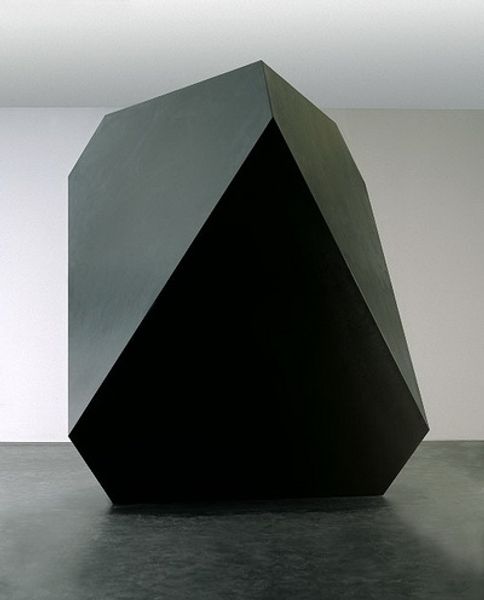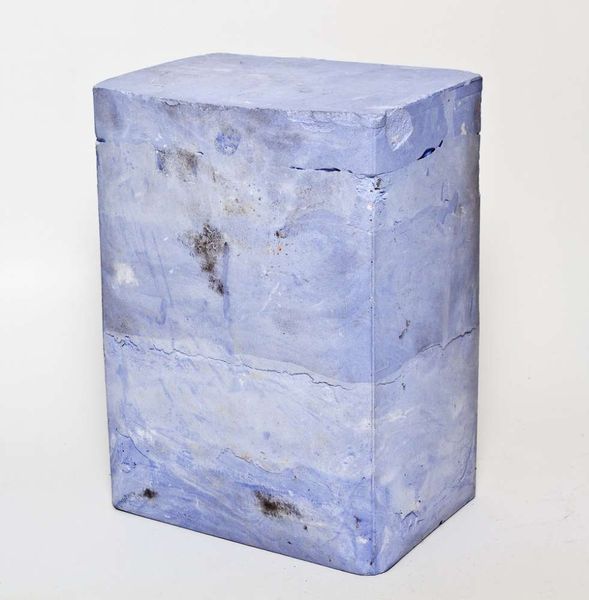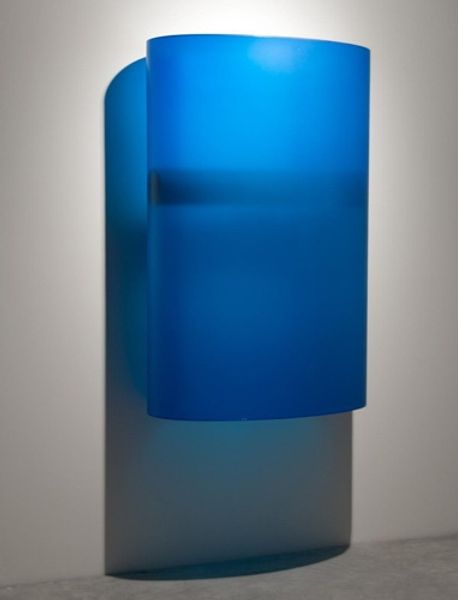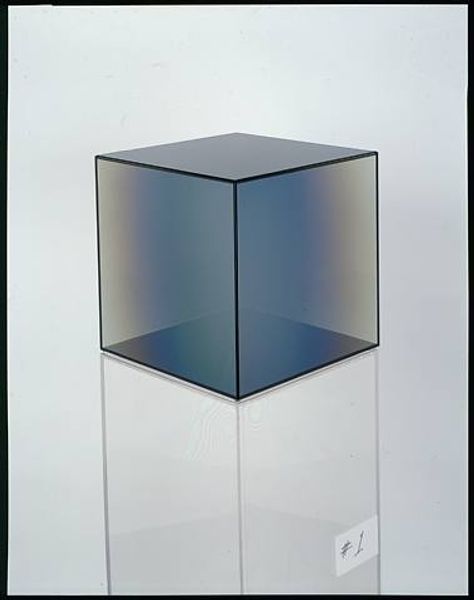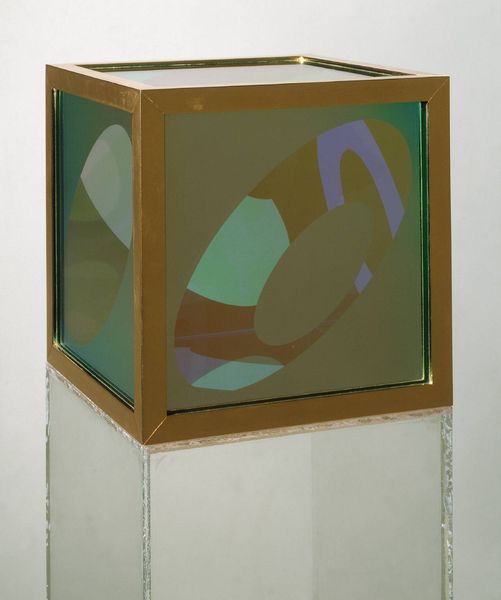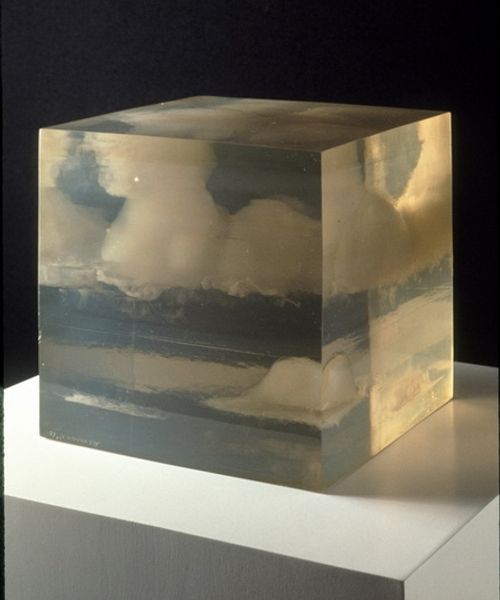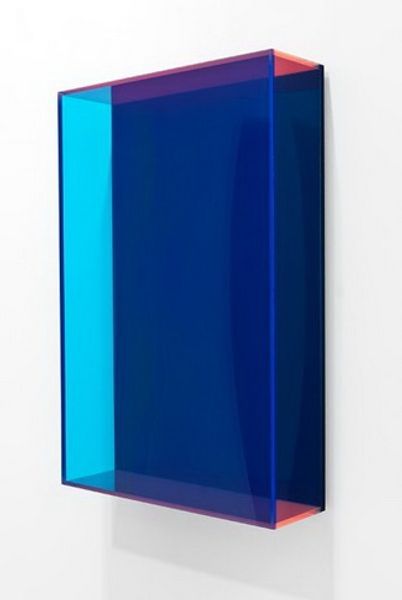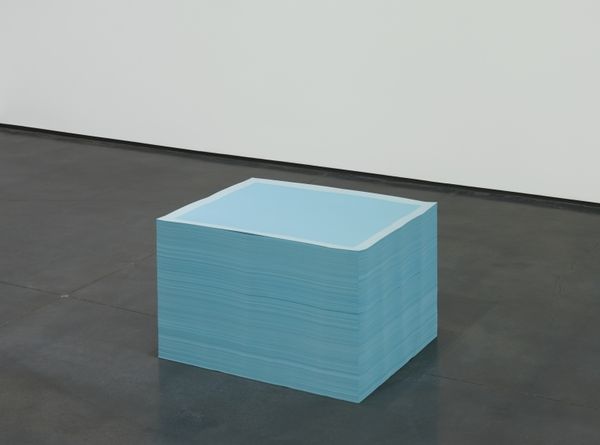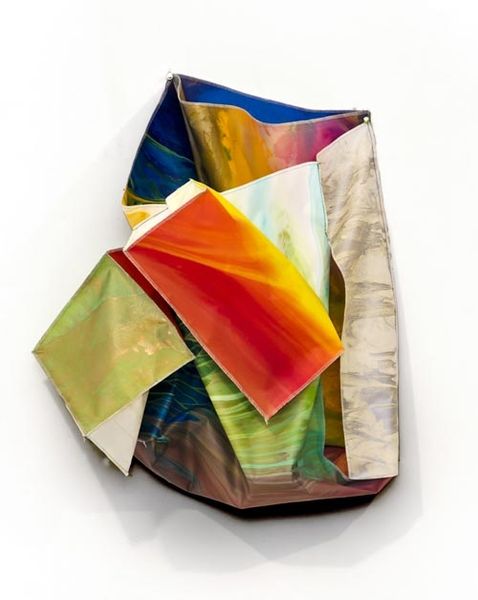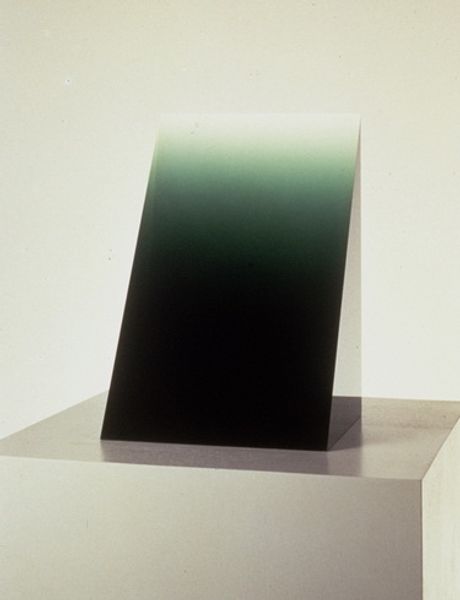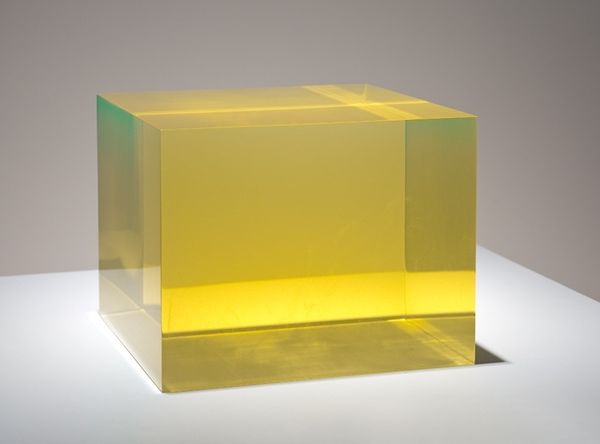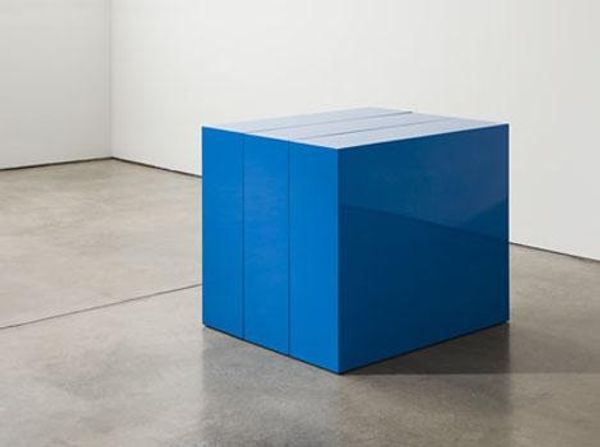
sculpture, resin
#
conceptual-art
#
geometric composition
#
geometric
#
sculpture
#
abstraction
#
pop-art
#
abstract composition
#
resin
Copyright: Richard Artschwager,Fair Use
Curator: Richard Artschwager’s sculpture "Logus (Blue Logus)," created in 1967, stands before us, an intriguing example of his exploration into the blurring of art and everyday objects. It's crafted from resin, which gives it a captivating surface quality. Editor: The color is really striking. The swirling blues evoke a sense of depth and fluidity. It's unexpectedly calming, considering the stark geometric form. It reminds me of glacial ice, even a strange jewel of the sea. Curator: Indeed. The title, "Logus," seems to suggest an attempt at systematizing or giving structure to something inherently without form. Its presence within the gallery space prompts a challenge to traditional sculptural conventions. We see a hard material mimicking an ethereal or organic texture. Editor: What’s intriguing is how Artschwager employs such a cold material like resin to create what appears like naturally-occurring patterns. Blue is consistently tied to peace, depth, and stability. Yet, paradoxically, in 'Logus,' there is also something a bit alienating – the unnatural sharpness of the form clashes with its familiar watery symbolism. Curator: A central tenet of Artschwager’s practice involved imbuing ordinary objects with heightened meaning through precise construction and presentation. The artist teases with function, hinting at furniture while firmly remaining sculpture. His practice invites questions about art's role, pushing against minimalist rigor. Editor: I think what resonates is how "Logus" compels us to reconsider familiar symbolic associations and their connection to memory and cultural associations. It's a constant push-pull between familiarity and abstraction that makes one examine even ordinary things with a renewed curiosity. Curator: Precisely. It makes us look harder, engaging with form in relation to established categories, revealing complexity within simplicity. Editor: It’s an unexpectedly potent reflection on our preconceived visual systems.
Comments
No comments
Be the first to comment and join the conversation on the ultimate creative platform.
